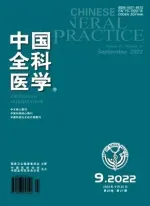澳大利亚John Murtagh 全科病案研究(三十九)——突然出现的眩晕
2011-08-15JohnMurtagh
John Murtagh (著),杨 辉(译)
作(译)者单位:3165 澳大利亚维多利亚州,澳大利亚Monash大学
1 病史
马莉·文斯顿,34 岁,前来看病的原因是突然出现“头晕目眩”。从枕头上抬起头来的时候,头晕情况更加严重,并引起严重的恶心症状。每次起床都会跌倒和呕吐。
2 其他病史
这是她第一次突然出现头晕的情况。没有耳鸣,也不影响听力。病人视力正常,不过眼前有闪光的感觉。病人没有其他的身体不适。她因上呼吸道疾病,服用小剂量的扑热息痛。在这次患病前,病人一向感到身体健康。
3 身体检查
病人看上去很苍白和忧郁,最好是平躺着不动。生命体征正常,体位变化不影响血压。病人有轻度上呼吸道感染的症状。在每次眩晕袭来的时候,眼球振颤,平衡紊乱。看起来听力没有受到影响。
4 问题
4.1 问题1 (1)初步的诊断是什么? (2)怎样区分两种相似的病因?
4.2 问题2 主要的并发症是什么,怎样排除?
4.3 问题3 怎样治疗这种疾病?
4.4 问题4 预后怎么样?
5 问题的答案
5.1 答案1 (1)初步诊断是前庭神经元炎(vestibular neuronitis),是第8 颅神经前庭支的炎症。(2)其他可能的诊断是内耳炎(labyrinthitis),是中耳迷路炎症。
事实上,很难区分这两种疾病,因为它们有同样的病毒病原。比较简单的区别方法是:突然出现眩晕+恶心和呕吐=前庭神经元炎;同样的症状+听力受损±耳鸣=急性内耳炎。
不过,我们通常采用前庭病(vestibulopathy)这个病名来涵盖这两种情况。另外也有人把这两种情况统称为前庭功能减退(vestibular failure)。
应该考虑到前庭神经的病毒感染,眩晕的症状至少要持续几天,严重的情况需要住院治疗。这种情况很像梅尼尔综合征(Meniere's syndrome),但前庭病很少有听觉失衡的情况。
5.2 答案2 最需要排除的并发症是中耳乳突化脓。
5.3 答案3 治疗措施归纳如下: (1)卧床休息,平躺;(2)注视一个方向可以减轻症状;(3)用药物减轻眩晕症状。
可以采用下列药物:(1)丙氯拉嗪(马来酸甲哌氯丙嗪)12.5 mg IM (症状严重时),或者25 mg 直肠给药然后口服给药。(2)普鲁米近(异丙嗪)10 ~25 mg IM 或缓慢IV,然后口服,或者根据情况IM 和缓慢IV。(3)另外一种替代药物是安定,它可以减少脑干对前庭刺激的反应。5 ~10 mg IM (急性期),然后5 mg 口服。有些专家认为安定是最适合的药物。(4)短期使用皮质甾类药物,通常可以促进病人恢复。比如用强的松龙9 d,药量递减。
5.4 问题4 前庭神经元炎和急性内耳炎都是自限性疾病,通常要持续5 ~7 d 或一周的时间。内耳炎持续的时间可能略长一些,如果在恢复期间有快速转头动作,则可能引起一过性眩晕。
译者注:梅尼尔综合征:内耳膜迷路积水中主要病理特征的一种内耳疾病,常表现为发作性眩晕,波动性听力减退、耳鸣、眼球振颤。发作有间歇期,多为中年人,多为单耳发病。
自限性疾病:疾病有自己的“生命周期”,人体会通过自身的免疫系统来克服疾病的影响,在没有医学干预的情况下也可以自愈。对自限性疾病的另外一种解释,是感染之后对再次感染具有获得性免疫力。很多病毒感染疾病属于自限性疾病。然而,自限性疾病不等于否定医学干预的必要性,合理的药物干预可以为病人缓解疼痛和不适,帮助病人增强体力和加强免疫力。在必要的情况下,也可以考虑住院治疗。
(本文编辑:闫行敏)
1 History
Mary Weston,aged 34,presents because of the sudden onset of 'whirling and spinning' of her head. The feeling is worse if she lifts her head off the pillow,which also aggravates severe nausea. She cannot get out of bed without falling and vomiting.
2 Other history
This is the first attack of this vertigo of sudden onset. There is not tinnitus or hearing loss. A flickering feeling of eyes is present although the patient has normal vision. There are no other bodily sensations. She has taken paracetamol on small doses for a recent URTI. She had been feeling well prior to this illness.
3 Examination
The patient was pale and distressed and preferred to lie flat and still. Vital signs were normal and there was no postural drop with her blood pressure. She had signs of a mild upper respiratory tract infection. During an attack she had nystagmus and marked disturbance of balance. There appeared to be no hearing loss.
4 Question
4.1 Question 1 (1)What is the probability diagnosis?(2)How do you distinguish between the two similar causes of this condition?
4.2 Question 2 What important complications should be excluded?
4.3 Question 3 What is the treatment of this disorder?
4.4 Question 4 What is the prognosis?
5 Answer
5.1 Answer 1 (1)The probability diagnosis is vestibular neuronitis (inflammation of the 8th cranial nerve). (2)The other possible diagnosis is labyrinithis (inflammation of the labyrinth of the middle ear).
In fact it is very difficult to distinguish between the two conditions and they usually have the same viral aetiology.
A simplified system is as follows:Acute vertigo with nausea and vomiting = vestibular neuronitis;Same symptoms + hearing loss ± tinnitus=acute labyrinthitis.
However we use the general term of acute vestibulopathy to cover both conditions. Another term used is vestibular failure.
This is considered to be a viral infection of the vestibular nerve that causes a prolonged attack of vertigo that can last for several days and be severe enough to require admission to hospital. The attack is similar to Meniere's syndrome expect that there is no hearing disturbance.
5.2 Answer 2 The important complication to exclude is suppuration in the middle ear or mastoil cavity (mastoiditis).
5.3 Answer 3 The treatment can be summarised as follows:(1)Rest in bed,lying very still. (2)Gaze in the direction that eases symptoms. (3)Drugs to lessen vertigo.
The following drugs can be used: (1)Prochlorperazine(stemetil)12.5 mg IM (if severe)or 25 mg per rectum,followed by oral medication. (2)Promethazine 10 to 25 mg IM or slow IV then oral or by IM or slow IV necessary. (3)An alternative is diazepam (with decreases brainstem response to vestibular stimuli)5~10 mg IM for the acute attack then 5 mg (o)tds. Some experts claim that diazepam is best. (4)A short course of corticosteroids often promotes recovery,e. g. ,prednislone in tapering does over 9 days.
5.4 Answer 4 Both vestibular neuronitis and labyrintitis are self limiting disorders and usually settle over several days e. g. ,5 ~7 or weeks. Labyrinthitis usually lasts longer and during recovery rapid head movements may bring on transient vertigo.
【编者按】当今人口老龄化和慢性病海啸给各个国家和地区的卫生服务系统带来了巨大挑战,首当其冲的问题是卫生服务提供系统怎样响应老龄化社区的健康服务需要。它促使卫生政策和服务的研究者们向探索创新性的卫生服务系统方向发展,初级卫生保健和全科医学位于这场新战役的前沿阵地。“快乐生活俱乐部”是受国际商标保护的慢性病管理项目,它源于澳大利亚的美好生活俱乐部,作为一种创新性的探索,它以动机谈话为主要干预措施,致力于把社区卫生服务更进一步地推向生物-心理-社会健康的服务模式。 “快乐生活俱乐部”项目系列报告均为澳大利亚Monash 大学Colette Browning 教授等的原创性研究论文,均系英文来稿,因《中国全科医学》杂志的主要读者群为以汉语为母语的人群,故全文以中文形式刊出。本期为系列报告之八,探讨2 型糖尿病的共病及其对社区干预计划和实施的意义。澳大利亚Monash 大学杨辉教授对本文进行了翻译,在此表示衷心的感谢。同时,为了方便广大读者查阅,英文来稿原文已上传至中国全科医生网:www. chinagp. net,敬请关注。
